 What can one say about a film director whose career was built on the adolescent pseudo-intellectualism of Pi (not Life of Pi, but the other, really depressing movie harking back to film school), the false-spiritual incoherence of The Fountain, and the aggressively offensive Black Swan? Not surprisingly, if one looks up Mr. Aronofsky at Wikipedia (that crowd-source equivalent of Pravda, complete with its own fake-freedom to dissent overseen by party hacks) one sees almost no mention of where this all leads. But where it leads is to Noah.
What can one say about a film director whose career was built on the adolescent pseudo-intellectualism of Pi (not Life of Pi, but the other, really depressing movie harking back to film school), the false-spiritual incoherence of The Fountain, and the aggressively offensive Black Swan? Not surprisingly, if one looks up Mr. Aronofsky at Wikipedia (that crowd-source equivalent of Pravda, complete with its own fake-freedom to dissent overseen by party hacks) one sees almost no mention of where this all leads. But where it leads is to Noah.
I refused to see Noah while it was in theaters, not wanting to contribute to the multiplier Aronofsky’s studio was using in its attempt to portray the movie as a “hit.” Indeed, the airbrushing continues, for example, in the typically slanted Wikipedia entry on the movie itself, according to which a few religious extremists disliked this terrific worldwide blockbuster that all sane religious folk loved. You may have forgotten what a stinker Noah actually is because most of Hollywood and its New York farm team want you to forget it, or at least maintain only a blurred notion of its reality. But Noah is the land where all the preening of today’s moviemakers leads. In its fundamental essence it is a colossal budget aimed at pleasing the masses with lots of big bangs to dress up an intensely vapid story line, unintentionally comical “re-imaginings” of classic motifs and archetypes, and characters so twisted by their creators’ ideology that they could appeal only to film students and holdovers from Occupy Wall Street.
 The central conceit of Mr. Aronofsky’s Noah is that the Old Testament is just like any other mythology, useful as a source to draw on in making one’s own stories. People have been playing riffs on Bible stories for many centuries. The Bible is, after all, the center of our Western religion and culture (keep in mind religion means to bind, and culture to cultivate, illustrating the deep connections between theological understanding and the moral imagination). But these retellings, by everyone from Dante to Steinbeck, to Veggie Tales, while they have used religious imagery and narrative for their own purposes, have been made with and through recognition of the importance of Jewish and Christian truth claims. Mr. Aronofsky does not feel so bound, and so succeeds principally in showing the inadequacy of his own moral imagination, not just to the higher task of conveying truths to his audience, but to the most basic job of a film maker: to tell a story worth his audience’s time.
The central conceit of Mr. Aronofsky’s Noah is that the Old Testament is just like any other mythology, useful as a source to draw on in making one’s own stories. People have been playing riffs on Bible stories for many centuries. The Bible is, after all, the center of our Western religion and culture (keep in mind religion means to bind, and culture to cultivate, illustrating the deep connections between theological understanding and the moral imagination). But these retellings, by everyone from Dante to Steinbeck, to Veggie Tales, while they have used religious imagery and narrative for their own purposes, have been made with and through recognition of the importance of Jewish and Christian truth claims. Mr. Aronofsky does not feel so bound, and so succeeds principally in showing the inadequacy of his own moral imagination, not just to the higher task of conveying truths to his audience, but to the most basic job of a film maker: to tell a story worth his audience’s time.
Here one might begin with the rewrite Mr. Aronofsky has imposed upon the central plot. God facing man’s sinfulness and sending floods as a cleansing judgment while telling the righteous Noah to build the Ark to save his family and two of every species of animal is, well, too religion-y. Instead we are given a “mythical” environmentalist plot involving the children of Cain as evil industry-builders, the children of Seth as vegetarian gardeners in a wasteland worthy of a post-apocalyptic B movie, animals as “the innocent” (a category that properly does not apply to creatures without free will), and fallen angels called “Watchers.” The Watchers are crucial, here, because they embody the Gnosticism Mr. Aronofsky wants to convey and the sometimes unintentionally comic manner in which he conveys it.
What we have, here, actually is Gnosticism-light, with just a hint of wheat grass. Of course, much of the plot is mined from various apocrypha and Gnostic tales passed through the medium of a mishmash of neo-paganism, environmentalism, and intellectualized distancing from God. According to Noah, the Watchers are angels who chose to help Adam and Eve survive after their expulsion from Eden. For their Promethean audacity, they were punished by God (sorry, Mr. Aronofsky only allows Him to be referred to as “the Creator”—nothing too personal, here). The Watchers have their heavenly light encrusted with dirt and rock. Again, the allusions to the old Gnostic heresies of pure spirit being encased in matter as a punishment are obvious, and expand on other references scattered throughout the movie. And Gnostic heresies can be powerful, as witness the first of the Matrix films Mr. Aronofsky clearly admires, despite the massive failing of the trilogy as a whole. But on-screen the Watchers resemble nothing so much as rejects from the Island of Misfit Toys and carry just about as much gravitas and meaning. The friendliest of them sounds like Optimus Prime from the Transformers movies on acid. Their main purpose is as carpenters and big dudes who can kill a lot of sons of Cain before exploding back into light and returning to their creator.
There are other characters as well, including Methuselah. Noah’s grandfather, here, is presented as having the power to heal and, apparently, the power to have worked with the Watchers to protect decent people, had he so chosen. It also would seem that he could have gone on the Ark, though Noah never bothers to mention the possibility to him. Perhaps this is because Noah knows that this Methuselah prefers (we are not told why) sleeping on the dirt in his cave or digging for berries until being washed away with the bad guys.
The real underlying mythology of Mr. Aronofsky’s Noah is, of course, environmentalism. Unfortunately for the movie, if not for mankind, ideology makes for a poor, unpersuasive mythology. Here it appears as odd choices of terms (animals as “the innocents”) and stilted mini-speeches about caring for creation. Most important, there is a ham-handed treatment of Noah’s “mission.” In this telling, Noah becomes convinced that mankind is so selfish that his creator must have appointed him to save only the innocent animals, seeing to it that people, including the children of Seth, die out.
As always, Mr. Aronofsky insists on layering his plot with moral ambiguity and, especially, scenes susceptible to multiple interpretations. Most important in this light is Noah’s determination to kill any female grandchild born to his foster-daughter, to whom Methuselah has restored to ability to bear children. Because a girl might become a mother, Noah is determined to slaughter his twin granddaughters immediately after their birth. In the end, he cannot strike, explaining later that when he saw them all he felt was love for them. The theme of acceptance is clear enough—Noah does what he is told when he can, but cannot take strong action without direct orders from the impersonal being that is his creator. As with so much of Mr. Aronofsky’s work (one thinks of The Fountain, about acceptance of death, and even the self-mutilation of the main character in Pi) strong action is presented, here, as dangerous, best avoided in favor of resignation and even renunciation.
There are other relatively clear meanings as well. The feminist meaning would emphasize how Noah’s attempt to dominate others and dictate life and death is defeated by parental instincts. This reading is buttressed by the fact that it is only the murdering antagonist, Tubal-cain (yes, that Cain) who argues for man’s dominance over nature, his right and need to forge his own fate. Then, of course, there is the environmentalist reading. The “good guys” see the animals, not only as possessing their own integrity, but also as existing for themselves, and as morally superior to mankind. It is only when Noah sees his grandchildren in the flesh that his natural, biological (animal-like and “innocent”) drive leads him to stay his hand. Finally, and the practical result of the other interpretations, the ruling pseudo-theology is emotivism. Noah feels love and so cannot strike. This is a good thing, of course, because such a feeling is an emanation of natural law, embodying the internal impulse toward the good. But, in Aronofsky’s hands the result is so shallow as to be, well, modern. Noah never comes to grips with the higher meaning of his emotion. Instead he wallows in guilt for having “failed” his creator by allowing mankind to survive.
In the end, Noah accepts his littleness and blesses his offspring as a cloying rainbow hangs in the distance. Whatever Mr. Aronofsky’s intentions, the rainbow’s promise rings false because he has piled on so much moral ambiguity one can foresee only further crimes against “innocents” of all species. No doubt the solution is further rebellion.
There is, of course, much truth in Mr. Aronofsky’s portrait of human nature’s ambiguity. We are mixtures of the good and the bad—veritable beasts with angels in us. We are not creatures of light encrusted with dirt, but flawed persons with moral choice and responsibility. The danger is that ungrounded intellectualism like Mr. Aronofsky’s will cause us to dwell on the ambiguity in our nature or, worse, give into it rather than take on the labors of a true Noah, seeking to do God’s will and save and serve what good we can.
Books on the topic of this essay may be found in The Imaginative Conservative Bookstore.




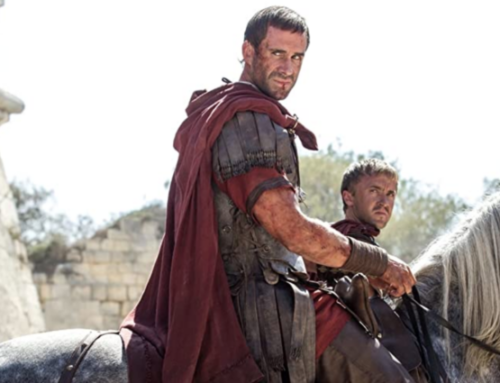
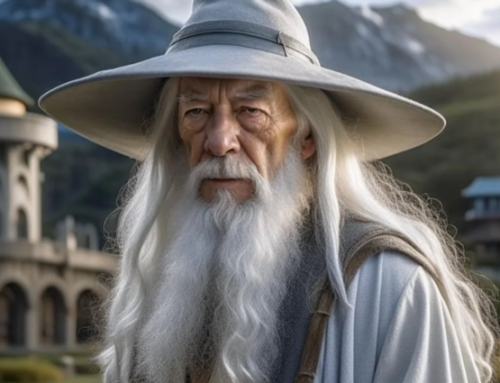
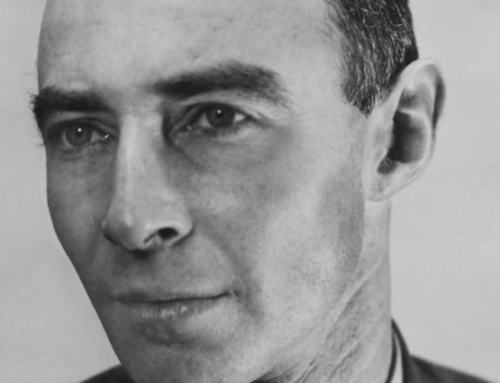
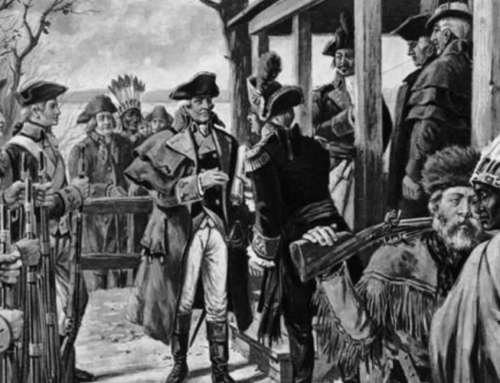
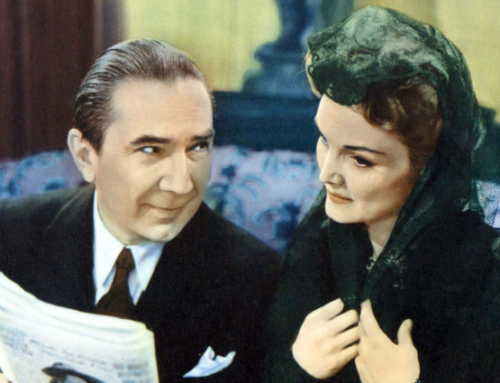
There are two main things I remember about this movie. One, the enormous amount of hype, mainly in the form of TV ads, that started several weeks before the movie was released, many featuring gushing praise from the wrong kind of sources (Rolling Stone, the NY Times). And, second, within a week of its release, the howls of derision aimed at the film from the movie-going public, especially on Internet sites like IMDb.com. And then the movie itself just sort of slunk into oblivion, almost as if it had never appeared in the first place.
My understanding is that the story was developed from Jewish apocryphal texts. If so, it’s still not a Christian re-telling, but hardly the travesty the author presents. I’m open to correction.
Stephen, you are correct about the Jewish apocrypha being an inspiration, and seeing that Aranovsky was raised Jewish, it makes sense to me that his inspirations are largely Jewish. I’m the minority that actually liked the movie, but I understand why others do not. Here are also some other things to consider:
1) The scriptures tell of God’s intent to flood the world not just for any type of evil but particularly for violence. In Genesis, violence is ascribed not just between people, but to everything in the world. Furthermore, the flood is presented as a re-creation, not just a judgement on people. Recall that the fisrt creation is actually a covenant. There is a sort of intimate relationship that is supposed to take place between God, man, and the rest of the world. When sin enters the picture, not only is our relationship with God ruptured, but also our relationship with the world, and not only is the strife between men, there is strife within creation itself.
2) The industrial side of Tubal-Cain is in fact inspired by the scriptural account. Genesis attributes the rise of the city, industries, the use of metals, etc., not to the line of Seth, but to the line of Cain, and this description is present side by side with the first polygamist, vanity, etc (you can see this with the symbolic meaning behind the names of the descendants). In other words, Genesis is already sceptical of an attitude towards creation that reduces it to mere use for man’s pleasures.
Conclusion… I didn’t like absolutely every sing thing in the movie, but the environmentalist angle, I think, is overall actually faithful to some of the overtones in Genesis.
Industry seems to ever get the bad rap…
And did the Countenance Divine,
Shine forth upon our clouded hills?
And was Jerusalem builded here,
Among these dark Satanic Mills?
I thought the movie was alright, even if it was very fantastical, like a comic book. I got the impression that it was thoughtfully researched, and did a good job of presenting Noah and his family in a way that was more human. I don’t think it was ever supposed to be a Biblically accurate retelling of the story in Genesis. But if it gets people to see our ancestors as real persons, really struggling to obey a vast God they do not fully understand, then I think it is helpful. For that is something we as believers often do. We are often ambiguous.